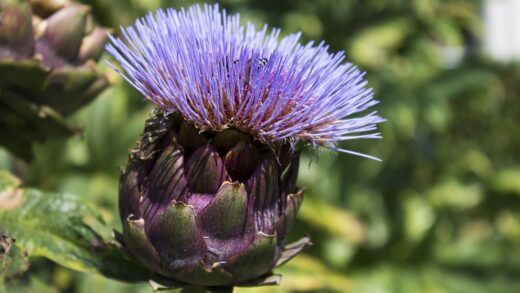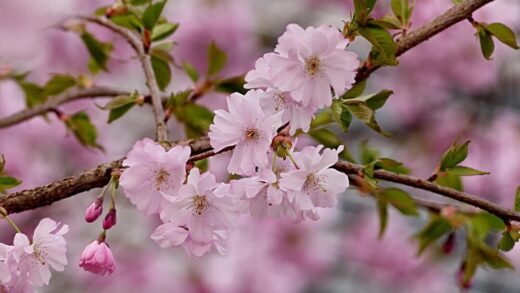To unlock the full, spectacular potential of the blanket flower, providing it with the correct amount of sunlight is not just a suggestion—it is an absolute necessity. This plant is a quintessential sun-worshipper, a trait deeply embedded in its genetic makeup from its origins on the vast, open prairies of North America. Its entire life cycle, from germination to growth and, most importantly, its famously prolific flowering, is driven by exposure to intense, direct sunlight. Understanding and respecting this fundamental need is the most critical step a gardener can take to ensure a thriving, vibrant display of fiery, daisy-like blooms throughout the summer and into the autumn.
For the blanket flower to perform at its peak, it requires a location that receives a minimum of six to eight hours of direct, unfiltered sunlight each day. More is always better. An ideal position would be in a south-facing or west-facing garden bed, where the plant can bask in the sun’s rays during the most intense parts of the day. When deprived of this vital energy source, the plant’s health and appearance will suffer dramatically. The direct correlation between the quantity of sunlight and the quality of the plant’s performance cannot be overstated; it is the single most important factor in its cultivation.
A lack of sufficient sunlight will manifest in several clear and undesirable ways. The plant’s growth will become weak and “leggy,” meaning the stems will be unusually long, thin, and stretched out. This is a physiological response known as etiolation, where the plant is actively reaching and searching for a better light source. These elongated stems are structurally weak and will be unable to support the weight of the flowers, leading to a floppy, untidy appearance. The foliage will also be a paler shade of green and will appear sparse rather than full and bushy.
Most significantly, insufficient light will have a profound impact on flowering. A blanket flower grown in partial shade may produce a few sporadic blooms, but it will never achieve the stunning, continuous carpet of color for which it is celebrated. The number of buds will be drastically reduced, the size of the individual flowers will be smaller, and the intensity of their signature red and yellow hues will be diminished. In essence, by planting a blanket flower in the shade, you are denying it the very energy it needs to perform its primary function of producing a magnificent floral display.
The science behind the need for sun
The blanket flower’s demand for full sun is rooted in the process of photosynthesis. This is the fundamental biological process by which plants use sunlight, water, and carbon dioxide to create their own food in the form of sugars (glucose). These sugars are the energy source that fuels all of the plant’s metabolic activities, including cell division, stem and leaf growth, root development, and, most energetically expensive of all, the production of flowers and seeds. Direct sunlight is the raw energy that drives this entire engine.
More articles on this topic
Plants that have evolved in open, sunny environments, like the blanket flower, have highly efficient photosynthetic pathways that are optimized for high light conditions. Their cellular machinery is built to handle and process a large amount of solar energy. When placed in a lower light environment, this machinery cannot operate at full capacity. The plant is essentially energy-starved, able to produce just enough fuel for basic survival but lacking the surplus energy required for the “luxury” activities of robust growth and prolific blooming.
Sunlight also plays a crucial role in the physical structure and health of the plant. Exposure to direct sun and its associated ultraviolet (UV) radiation encourages the development of thicker cell walls and a more robust cuticle (the waxy outer layer of the leaves). This results in sturdier stems and tougher leaves that are less susceptible to physical damage from wind and rain. Furthermore, these sun-hardened tissues are often less palatable to certain pests and more resistant to the penetration of fungal spores, contributing to the plant’s overall resilience.
The intensity of the flower color is also linked to sunlight. The vibrant red, orange, and yellow pigments in the petals, known as carotenoids and anthocyanins, often develop more intensely under high light conditions. These pigments not only serve to attract pollinators but can also act as a form of natural sunscreen for the plant’s tissues, protecting them from potential damage from high levels of UV radiation. This is why the same plant variety can appear much more vividly colored when grown in full, blazing sun compared to a location with filtered light.
Identifying the ideal planting location
Selecting the perfect spot for your blanket flower is a task that requires careful observation of your garden’s specific light patterns. Do not simply assume that an area is “sunny.” It is essential to spend a day tracking the movement of the sun across your property. Note which areas receive direct sun in the morning, which are illuminated during the midday peak, and which catch the late afternoon rays. The ideal location will be one that is free from the shadows cast by buildings, trees, or other large shrubs for at least six, and preferably eight or more, hours.
More articles on this topic
A south-facing aspect is typically the gold standard for sun-loving plants in the Northern Hemisphere, as it provides the longest duration of direct sunlight throughout the day. A west-facing location is also an excellent choice, as it captures the intense afternoon sun. An east-facing spot, which receives morning sun but may be shaded in the afternoon, can be adequate but is not optimal. It may result in slightly less vigorous growth and flowering compared to a south or west exposure. A north-facing location should be avoided entirely, as it will likely be too shady for the plant to survive, let alone thrive.
When evaluating potential sites, consider the entire year, not just the current season. The angle of the sun is lower in the sky during the spring and autumn compared to the peak of summer. This means that shadows cast by surrounding objects will be longer. A spot that seems sunny in June might receive significantly less light in April or September. Also, consider the future growth of nearby trees and shrubs. A small, newly planted tree may not cast much of a shadow now, but in a few years, it could grow to shade your once-sunny perennial bed.
Beyond the presence of direct sunlight, the quality of that light matters. The blanket flower prefers unfiltered, open sky. A location under the high, dappled shade of a tall, thin-canopied tree is not the same as full sun. While some light gets through, it is filtered and significantly less intense, reducing the photosynthetic potential of the plant. When searching for the perfect home for your blanket flower, look for the most open, unobstructed patch of sky you can offer it. This will ensure it receives the high-energy light it is programmed to expect.
Consequences of inadequate light
The visual cues of a blanket flower receiving inadequate light are unmistakable and serve as a clear cry for help from the plant. The most immediate and obvious symptom is etiolation, or leggy growth. The internodes—the sections of stem between the leaves—will stretch out, making the plant look sparse and lanky. This is a survival mechanism; the plant is pouring its limited energy into vertical growth in an attempt to rise above whatever is shading it and find more light. These stems will be weak, pale, and often unable to stay upright on their own.
Flowering will be severely compromised. In partial shade, a blanket flower might struggle to produce a handful of flowers, a pale imitation of its potential. The plant simply does not have the energy reserves to invest in the complex process of forming buds and blooming. The flowers that do manage to form will likely be smaller in diameter, and their colors will lack the fiery brilliance and saturation seen in sun-grown specimens. The plant may cease blooming entirely long before the end of the season, or it may fail to bloom at all.
The overall health and resilience of the plant will also decline in low light. The foliage will be thinner and softer, making it more susceptible to damage and disease. Fungal diseases like powdery mildew thrive in the cool, damp, and stagnant air conditions often found in shady areas. A sun-starved plant is a stressed plant, and a stressed plant has a weakened immune system, making it an easy target for a host of opportunistic pests and pathogens. It is far more likely to succumb to problems that a healthy, sun-drenched plant would easily fend off.
If you have mistakenly planted a blanket flower in a location that is too shady, the best course of action is to move it. These plants are generally tolerant of being transplanted, especially if done in the cooler weather of spring or early autumn. Carefully dig up the entire root ball and relocate it to the sunniest spot in your garden. Water it in well and provide some initial care as it re-establishes. The transformation can be remarkable; once exposed to the sunlight it craves, a struggling, leggy plant will often rebound with vigorous new growth and a new flush of blooms.


















